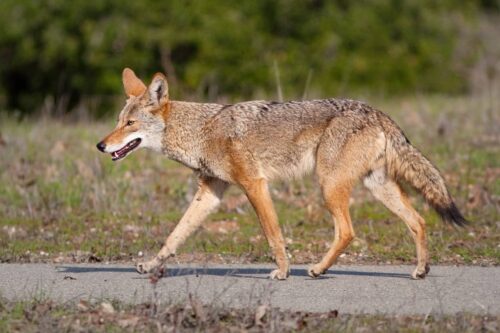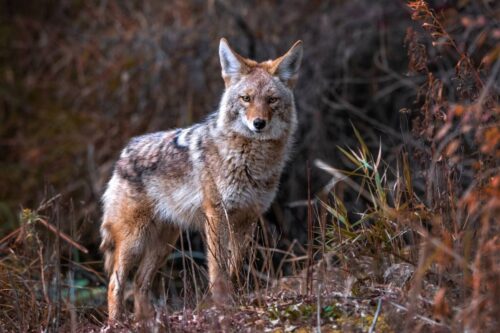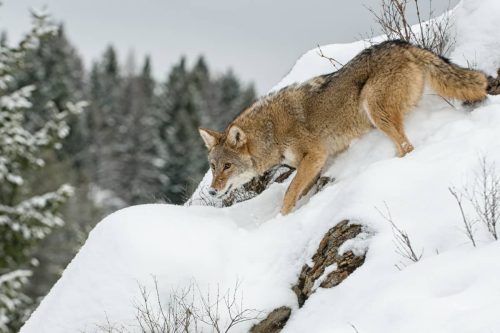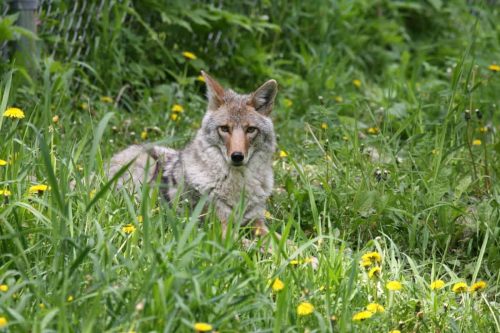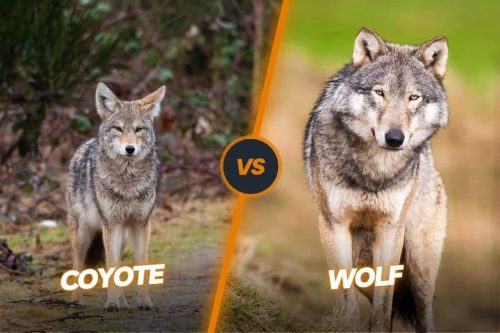Coyotes in Iowa: History, Diet, Habitat, Hunting & More
In the heart of the Hawkeye State lies a captivating story of resilience, adaptability, and wild coexistence. The presence of coyotes (Canis latrans) in Iowa unveils a tale that transcends mere survival, encompassing their thriving role as apex predators within the state’s intricate ecosystems. With their elusive nature and enigmatic behavior, these canids have become a symbol of the delicate balance between the natural world and human landscapes.
As the sun sets over Iowa’s expansive fields and urban enclaves, the haunting calls of coyotes serve as a reminder of the intricate web of life that intertwines across its diverse terrain. In this exploration, we embark on a journey into the lives of these resourceful creatures, tracing their historical roots, unveiling their remarkable adaptations, and unraveling their significance within the intricate tapestry of Iowa’s wildlife.
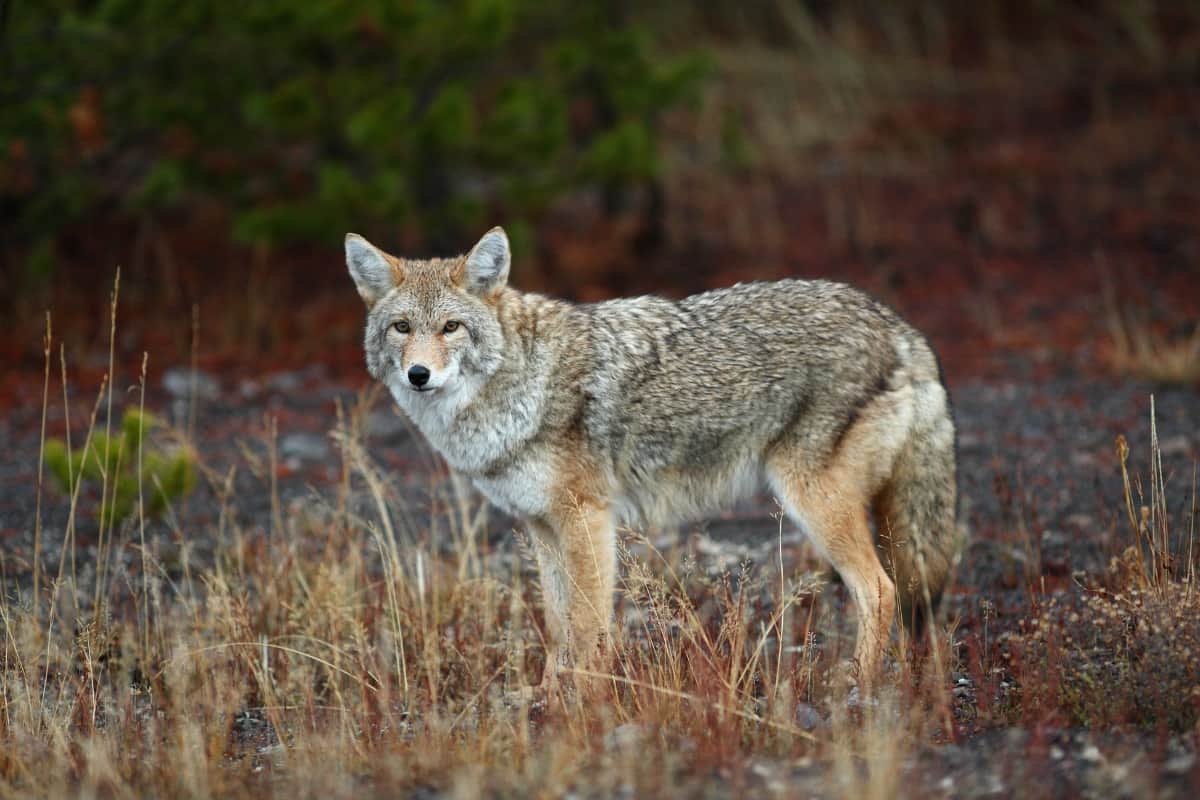
Contents
- Existence of Coyote Species in Iowa
- Coyotes in Iowa: Historical Context
- Factors Contributing to their Expansion and Establishment in Iowa
- Adaptation of Coyotes in Iowa’s Ecosystem
- Coyote Vocalizations and Communication in Iowa
- Research and Conservation Efforts for Coyotes in Iowa
- Human-Coyote Interactions in Iowa
- The Role of Research in Dispelling Myths and Misconceptions
- Coyote Hunting Rules and regulations in Iowa
- Conclusion
- FAQs
Existence of Coyote Species in Iowa
Join us as we delve into the hidden realms of the coyotes of Iowa, unraveling the mysteries that shroud them and discovering the pivotal role they play in shaping the dynamic ecosystems of the Hawkeye State.
Range and Habitat Preferences of Coyote in Iowa
Coyotes in Iowa have expertly carved out their territory across a diverse range of landscapes. From the tranquil countryside to the bustling urban centers, these adaptable creatures have shown remarkable resilience in adapting to their surroundings. Found throughout the state, their habitat preferences encompass a wide array of environments, including grasslands, woodlands, agricultural fields, and even suburban neighborhoods.
The ability to seamlessly transition between rural and urban habitats has contributed to their widespread distribution. While they primarily roam during the cover of night, their presence is unmistakable through the traces they leave behind: tracks in the snow, paw prints on muddy paths, and occasional eerie calls that echo across the Iowa plains.
Inhabiting both natural and human-altered landscapes, coyotes in Iowa embody the essence of an agile and resourceful predator, navigating the intricate tapestry of habitats that the Hawkeye State offers.
Coyotes in Iowa: Historical Context
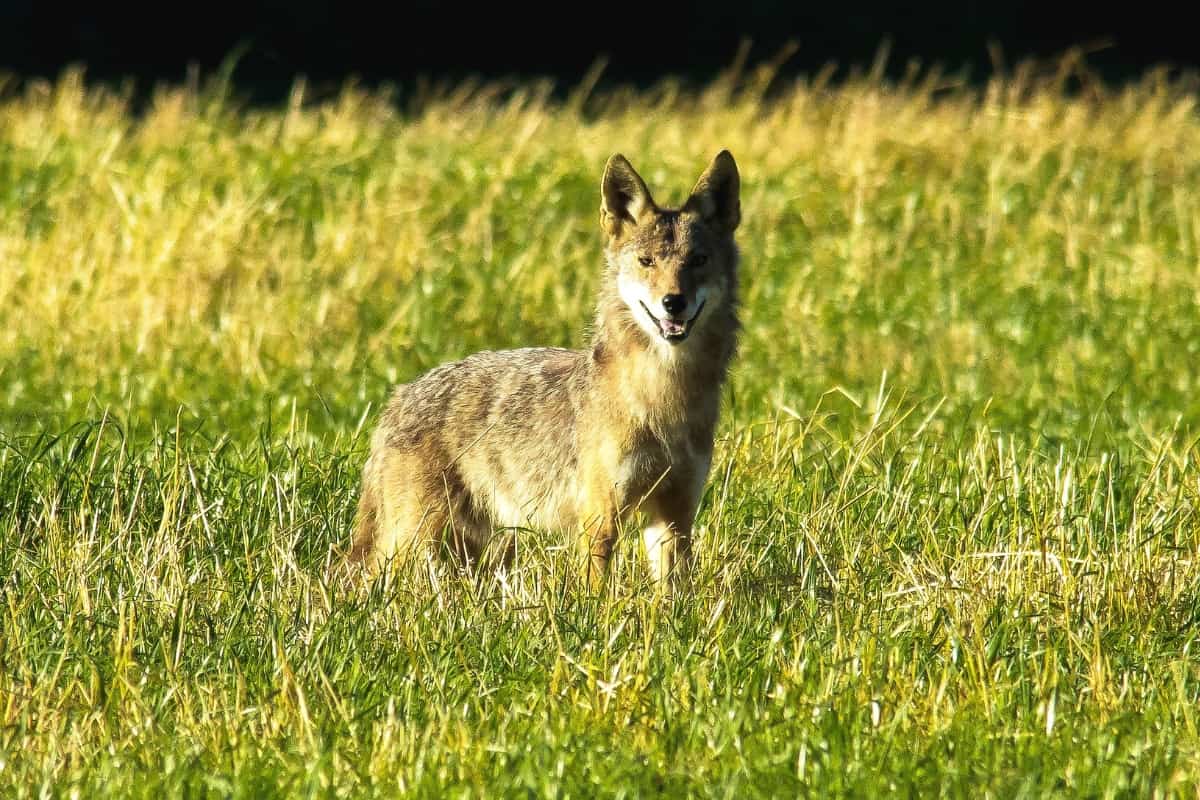
The historical context of coyotes in Iowa is a testament to their adaptability and tenacity. Originally inhabitants of the western regions, coyotes gradually expanded their range eastward over the past century. Their presence in Iowa can be traced back to the mid-20th century when factors such as land use changes, reduced predator populations, and human activities facilitated their migration. As native predators like wolves declined, coyotes seized the opportunity to establish themselves in the state’s varied landscapes.
This expansion stirred curiosity and sometimes concern among residents, igniting a journey of coexistence and understanding. The historical trajectory of coyotes in Iowa highlights their ability to navigate changing environments and underscores the importance of recognizing their role in the intricate web of the state’s ecosystems.
Also read: Are there coyotes in Delaware?
Factors Contributing to their Expansion and Establishment in Iowa
Coyotes’ expansion in Iowa can be attributed to multiple factors. Decline of larger predators, land use changes, and human-modified landscapes created opportunities. Their adaptability to varied environments and abundant food sources further supported their establishment, making them an integral part of Iowa’s wildlife mosaic.
Adaptation of Coyotes in Iowa’s Ecosystem
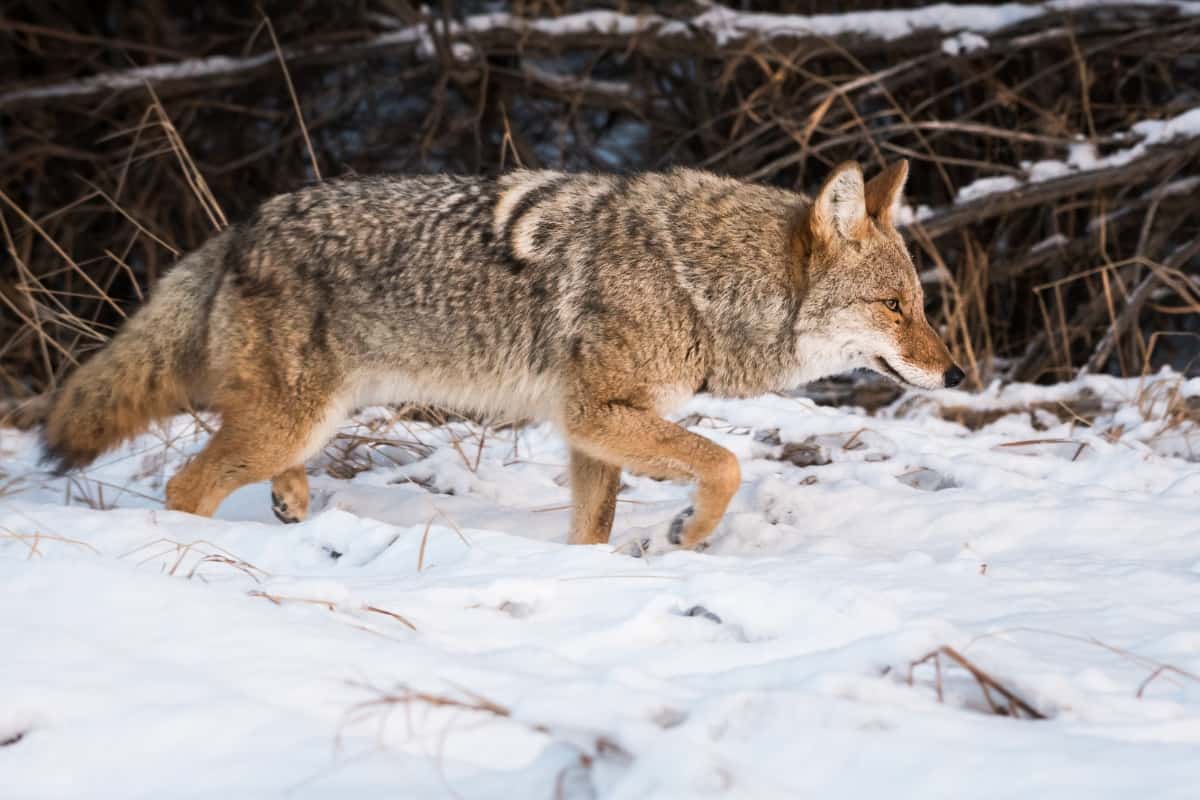
Navigating the diverse landscapes of Iowa, coyotes exhibit unparalleled adaptation. Their omnivorous diet, nocturnal behavior, and versatility in urban and rural settings exemplify their remarkable ability to coexist with changing environments. Unveiling the intricacies of their adaptation unveils their vital role within Iowa’s intricate ecosystem.
Human-Coyote Interactions in Iowa
Coexistence with coyotes necessitates understanding. While rare, conflicts can arise when coyotes lose their natural fear of humans. Education about respectful distance, non-attractant practices, and reporting unusual behavior helps maintain harmony.
Educating the Public, Pet Safety, and Waste Management
Public awareness is pivotal. Teaching locals about securing pets, refraining from feeding coyotes, and proper waste disposal deters their attraction. By promoting responsible practices, communities can mitigate potential conflicts.
Read this article to learn about Pennsylvania Coyotes.
Coyote Vocalizations and Communication in Iowa
Vocalizations are the core of coyote communication. Yips, howls, and barks convey territory, social bonds, and warnings. Deciphering these cues enables insights into their behavior, aiding coexistence efforts.
Research and Conservation Efforts for Coyotes in Iowa

Ongoing research dispels myths and enhances understanding. Conservation initiatives emphasize preserving ecological balance while addressing concerns. Public support and collaboration are essential for informed decision-making.
Tracking and Monitoring Coyote Populations in Iowa: Monitoring coyote populations offers valuable data. Tracking their numbers, distribution, and behaviors aids in managing potential conflicts and ensuring sustainable cohabitation.
Human-Coyote Interactions in Iowa
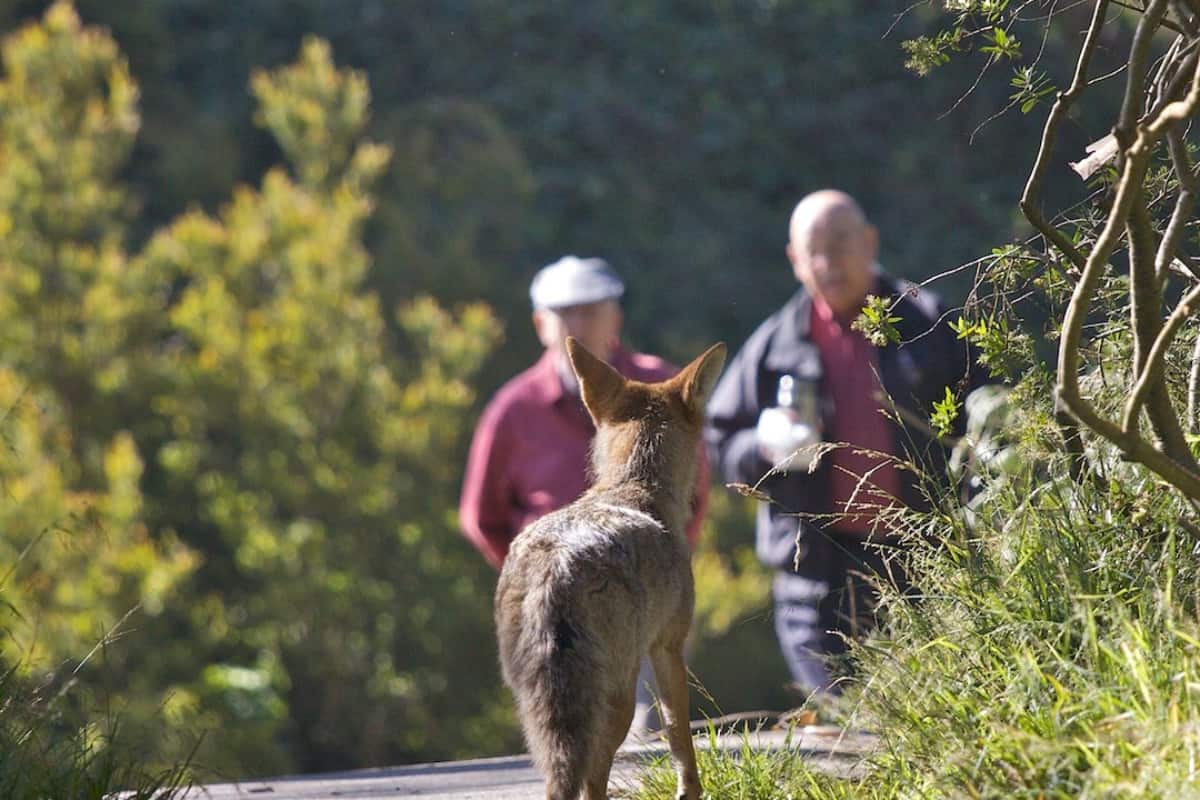
As the enigmatic coyotes of Iowa continue to adapt and thrive within diverse landscapes, their interactions with the human population present a dynamic interplay between wildlife and urban life. The occasional encounters, though infrequent, spark curiosity and sometimes concerns. Understanding the nuances of human-coyote interactions is crucial for fostering a harmonious coexistence.
By delving into the factors influencing their behavior, exploring strategies for safe and respectful cohabitation, and dispelling misconceptions, we can unravel the complexities of these encounters and work towards a balanced relationship that respects both the wild nature of coyotes and the needs of the local communities. Let us inspect these aspects one by one.
The Role of Research in Dispelling Myths and Misconceptions
Research serves as a powerful tool in dispelling myths and misconceptions surrounding coyotes. Scientific studies provide accurate data on their behavior, diet, and interactions with humans. By objectively analyzing these findings, we can challenge unfounded fears and exaggerated beliefs.
For instance, research has shown that coyotes are more likely to avoid humans rather than confront them. Understanding their role as vital components of ecosystems and not as overly aggressive threats aids in fostering informed attitudes and decisions. Through the dissemination of well-researched information, we can replace apprehension with understanding, contributing to more harmonious coexistence with these adaptable predators.
Coyote Hunting Rules and regulations in Iowa
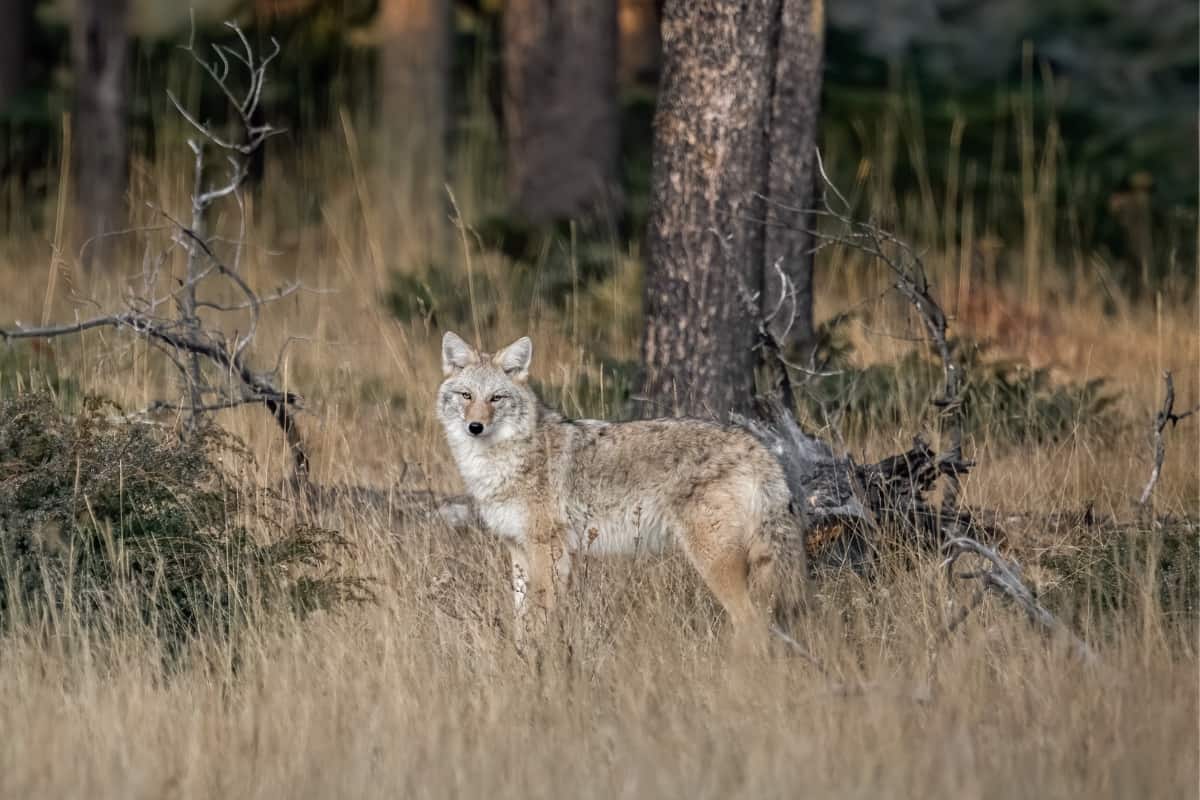
In Iowa, coyote hunting is regulated by specific laws and rules to ensure responsible and sustainable management of their population. Coyotes are classified as a furbearer species, and hunting them is legal throughout the year. However, hunters must possess a valid hunting license, and there are specific trapping regulations that must be followed.
It’s important to note that hunting methods may vary depending on the season and the hunting area. There are restrictions on using artificial lights for hunting, as well as rules about the use of electronic calls and decoys. Additionally, hunters are encouraged to follow ethical practices and avoid hunting near residences or populated areas.
While coyote hunting is allowed, it’s essential for hunters to stay informed about the most up-to-date regulations and to act responsibly to ensure the conservation of both coyote populations and other wildlife species.
Conclusion
In the tapestry of Iowa’s natural world, the presence of coyotes stands as a testament to nature’s resilience and adaptability. Thriving across diverse landscapes, these enigmatic predators have seamlessly integrated into the intricate web of life. Their adaptability, vocal symphonies, and ecological significance unveil a deeper understanding of their role within the Hawkeye State’s ecosystems.
While inspiring awe and curiosity, coyotes also remind us of the delicate balance between humans and wildlife. By embracing knowledge over fear, we can navigate the complexities of coexistence, fostering a future where both Iowa’s inhabitants and its thriving coyote populations harmoniously share the same dynamic landscape.
FAQs

Ray is an experienced wildlife researcher with a background in veterinary medicine. His contributions have significantly advanced our understanding of various wild animals.

